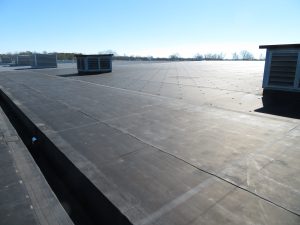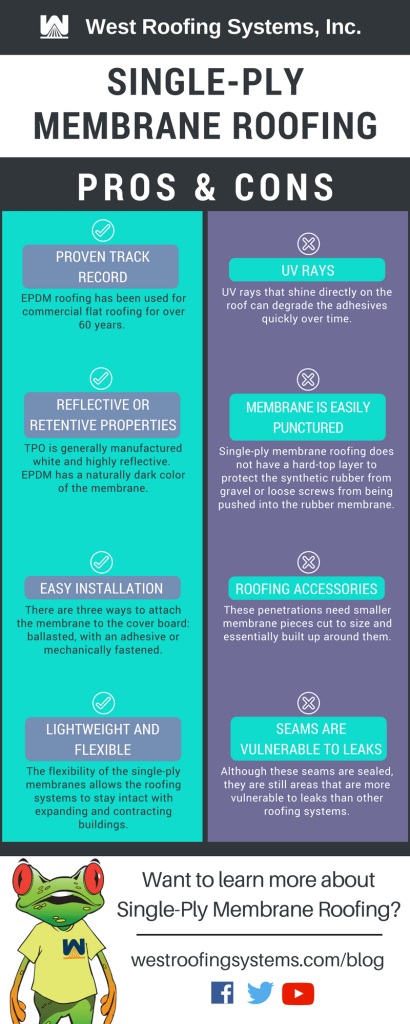With today’s economy, property owners and managers face the daunting task of keeping their facility running safe and in decent shape. One of the most critical systems in a commercial facility is the roofing system. So, why jump into an investment without knowing the advantages and disadvantages of single-ply membrane roofing?
At West Roofing Systems, we have over 38 years of commercial roofing experience; we work with customers every day to decide what kind of roof is best for their facility.
While the choice is ultimately up to the building owner, we want to point out a few pros and cons to Single-Ply Membrane Roofing Systems.
The Basics

EPDM Roofing System
Single-Ply Membranes are sheets of rubber and other synthetics that can be ballasted or chemically adhered to insulation to create a layer of protection for your commercial facility.
There are two main types of single-ply membrane commercial roofing: Thermoplastic Polyolefin (TPO) and Ethylene Propylene Diene Terpolymer (EPDM). They differ in their chemical makeup, how they are installed and their energy efficiencies.
Read More: Single-Ply Membrane Commercial Roofing: Installation and Performance
Here is an infographic to compare the pros and cons of Single-Ply Membrane Systems (Download your copy here) :


